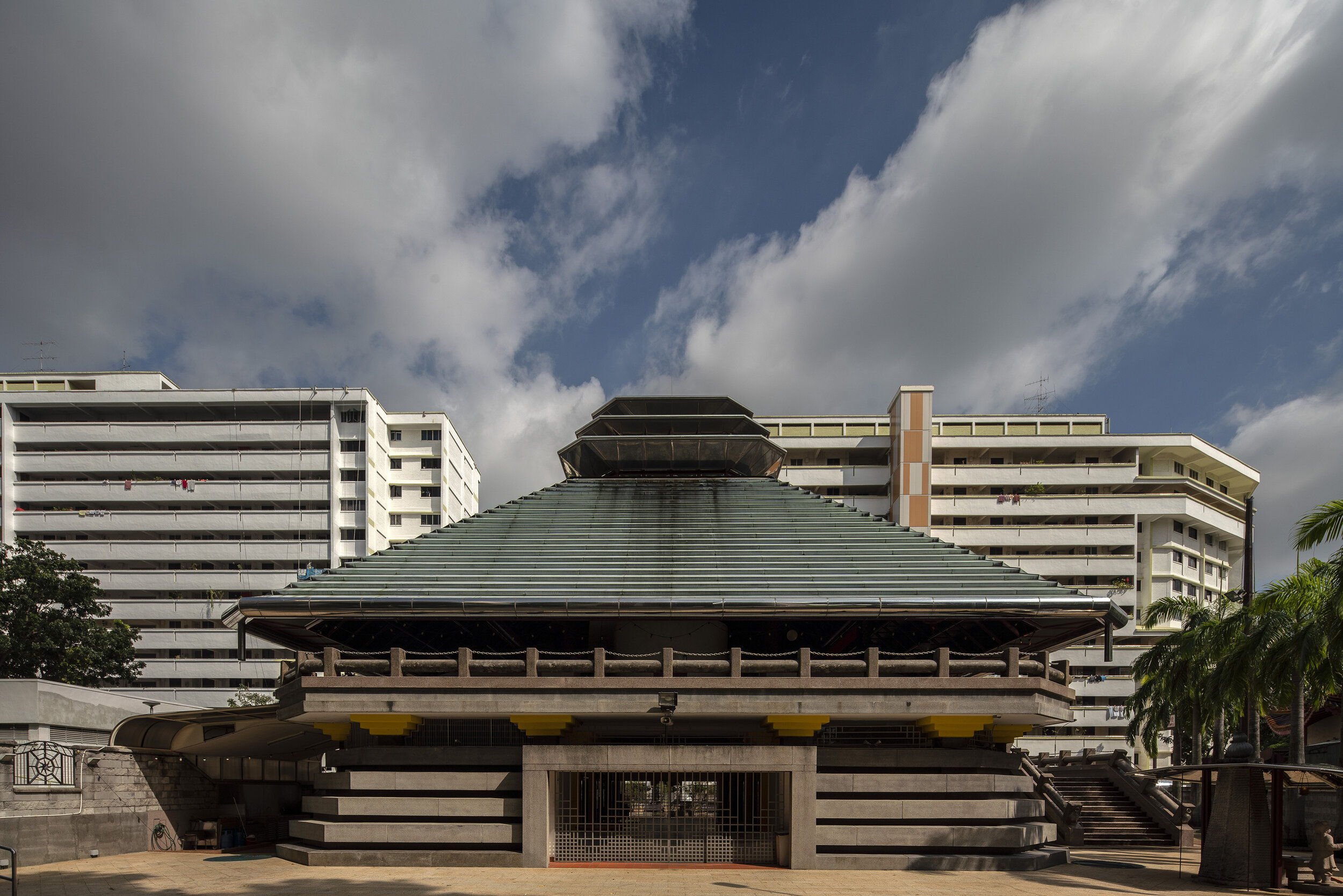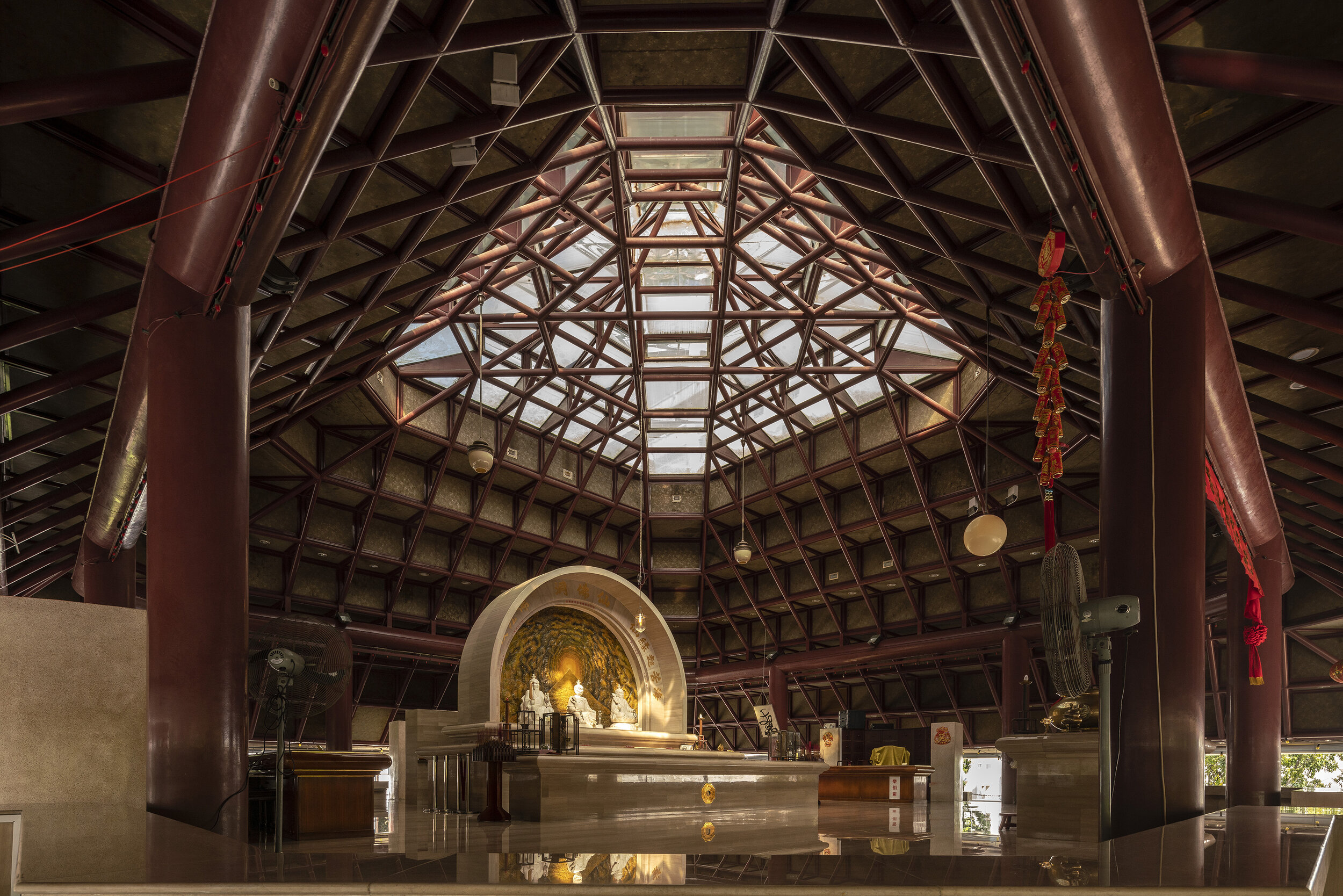Chee Tong Temple
Unlike churches, Chinese temples built after the Second World War seem to have remained largely traditional in design, in terms of their adherence to the courtyard configuration and the use of traditional Chinese architectural elements (even when they were built in reinforced concrete). Arguably, Chee Tong Temple (1987) designed by Tay Kheng Soon of Akitek Tenggara is the first modern Chinese temple. It is a two-storey building with the worship hall sitting atop the auxiliary facilities in the ground storey. The building is capped by a large copper-cladded pyramidal roof supported by a steel space frame structure resting on eight large columns. Mirrors were mounted at the top of the roof to reflect light from the exterior into the altar area, creating a sense of lightness and airiness not found in traditional Chinese temples.
Locations: 62 Hougang Ave 3, Singapore 538844
Architects: Tay Kheng Soon, Akitek Tenggara
Year: 1987
Status: Not conserved
Last modified on 4 May 2021. Description adapted from Chang Jiat Hwee, “Religiously Modern,” The Singapore Architect 14 (2018), 108-125.



